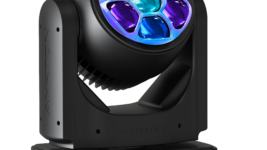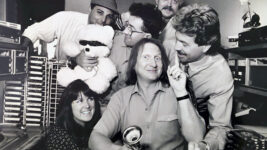Subscribe to CX E-News
I just found an error in your website at: HISTORY! “In 1978, the 12″ box truss and winch-up stand was invented by either Phil Salmon, or Richard White’s Rock Industries (depending on which legend you listen to!)“ Well actually old chap the story goes like this…..
In about 1977 or so, I was based in Canberra lighting bands on an amateur basis. I purchased some 1000 watt QI floodlights with aluminium snouts from Zapco Lightshows (Julius Grafton).
There were 24 in all. I believe there is still one in existence that I gave to a friend at Byron Bay in 1990 to light his farm with. Call the NSW Major Crimes Squad. I think they have it now. Don’t mention my name.
After shelling out my hard earned money I collected the lights in my station wagon and headed back to Canberra.
As I did not have any “crew” at the time I had to set up the whole show myself AND fit it in a 1964 Holden Station wagon. Removing all the seats including the front achieved this. Long trips were a bit uncomfortable but what the heck; the drugs were great back then. Keeping the road stuck to the ground on 3 orange barrels was quite a challenge. Sitting on a fruit box full of leads driving a EH Holden with lowered seat and polished ignition key was a real experience.
The wagon was a bit heavy so I reduced weight by removing that unnecessary green wire from my lighting system. I also dispensed with any parts of the car that were not necessary for it to function. The exhaust system and door handles for example. I also threw out the mirrors as I could not see out the back.
I still had one big problem…
I could not get the lights in the air. They were too heavy.
Scaffolding would not fit in the wagon. I needed a solution.
At the time I was an electrician working on major construction. On site the air-conditioning company used a homemade version of a genii hoist to lift the metal ducts into position. It was too heavy and cumbersome but the winch looked interesting. As I did not have any money I could not buy steel so I settled for 50 mm Galvanised Electrical Conduit. Using various electrical conduit fittings, a boat winch and some clothesline wire I constructed my prototype. I took them out for a Beta test. At this stage the legs did not fold.
The only available space on the wagon to carry the stands was on the roof racks. It looked a bit like a prop-plane. Quite cool I might add. With a few orange barrels on board I felt and looked a bit like Biggles. I should note that the wagon did increase in speed when the stand bases faced the front of the car. All was well.
Till about 1979.
In 1979 some friends and I had a very cosmic evening. We built what we believed to be the biggest mirror ball ever made. It was about 3 foot in diameter.
The only place I could carry it was on the roof racks. The stands had to move. I tied them onto the holes in each door where the door handles used to be. One stand on each side of the car. Unfortunately I could no longer climb through the window to drive so a rethink was in order.
Picture the scene, the wagon with two propellor like stands, one on each side of the car with a 36” mirror ball on the top returning from a gig at 4 am in the morning.
Now the only people out at that time are either musicians, roadies, punters on drugs, drunks and the cops wanting to snatch all four.
It didn’t take long for the Canberra constabulary to cotton on that it was not a normal car travelling down the road. It was also not necessarily a normal driver. Normal for that hour, but not normal by their definition. It did not take long for them to pull me over and to my dismay, discovered that their version of overloading and mine were many miles apart.
After lengthy discussions we came to the compromise that if the stands were to go in the car and the mirror ball was covered I was complying with most of the transport regulations at the time. Fortunately they did not notice the unique seating arrangements in the vehicle.
So I decided to fold the legs. Thus the folding leg winch-up tower came into being. Unlike later units the legs folded from the base upwards, with four turnbuckles on a sliding collar used to steady them. You could even place them on an uneven surface and level them by adjusting the turnbuckles.
To correct your website…..
Myself and a guy called Ian McGrath who did the original welding for me invented the winch up. Ian developed the folding legs. I developed the pulley. Neither of us will take responsibility for the clothes line wire. We built 4 all up. I wanted to glue them together (gaffa tape was out of my league) but he suggested welding might be better. The clothes line wire had to be replaced once a month.
All my neighbours got really upset because some fucker stole the wire from their Hills hoists.
I showed them to Roger Foley and Phil Salmon around 1979. Phil built two copies for Roger. He also built two stubby ones for loudspeakers.
Richard White swapped two of my originals for two ( maybe four?) Rock ones around 1981 because they were so unsafe and I used to tell people he made them.. The remaining two did not have folding legs and were confiscated by the Australian Federal Police along with a few metal halides I had in 1988. That’s another story…
I assume they bolted them to a cop car and played Biggles.
—–
Q: What is an Orange Barrel?
A: Lysergic Acid Diethylamide 25
Subscribe
Published monthly since 1991, our famous AV industry magazine is free for download or pay for print. Subscribers also receive CX News, our free weekly email with the latest industry news and jobs.











